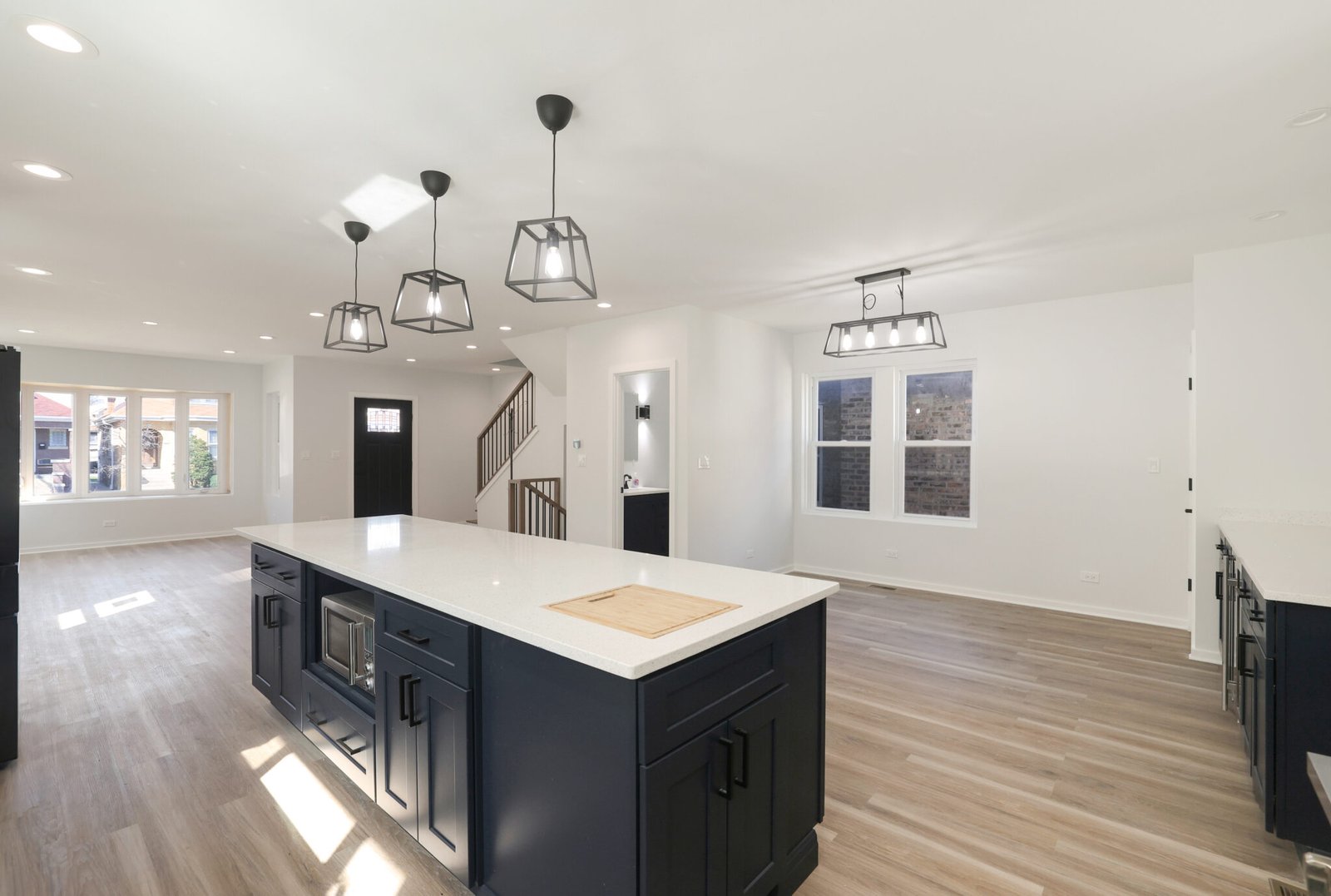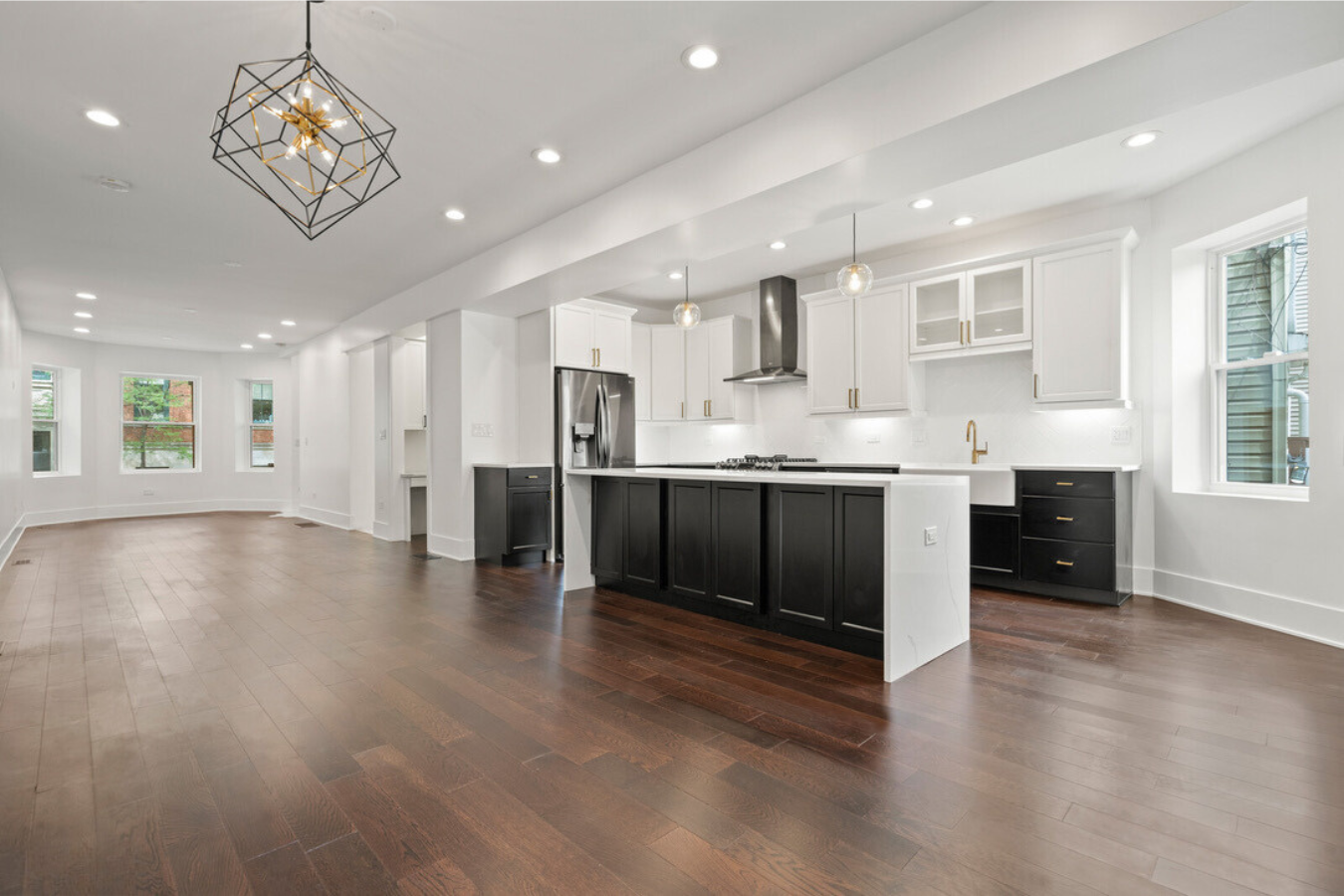
6 Essential Steps in the Home Addition Permits Process – A Comprehensive Guide
When planning a home addition, navigating the building permits process can seem overwhelming. Yet understanding and following a clear, step-by-step guide simplifies the journey from planning to final approval. In this article, you will discover six essential steps in the home addition permits process—from grasping foundational guidelines to finalizing inspections. By mastering each step, you can ensure that your project complies with zoning laws, building codes, and local regulations while reducing delays and unexpected expenses. Let’s walk through the process in clear, numbered phases that empower you to move forward with confidence in your
or expansion project.
Whether you’re a homeowner in Chicago or elsewhere seeking expert guidance on home additions, this detailed resource provides practical strategies and real-world examples that illustrate each phase. You’ll learn not only what requirements must be met but also how to manage permit inspections, overcome unexpected challenges, and streamline the entire permit application. With over 20 years of experience in design/build remodeling, companies like Pegasus Construction have honed techniques to help homeowners successfully complete their projects. Let’s begin with Step 1.
1. Understanding the Home Addition Building Permits Process – Establishing the Foundation

The first step in any home addition project is to understand the building permits process and how local zoning, construction laws, and property codes apply to your remodel. In this phase, you need to research and define the scope of your project and learn which permits—such as demolition, renovation, or certificate of occupancy—are required by your locality.
Key considerations include verifying setback requirements, building heights, and property lines. For example, a remodel may require a permit application that details how an addition will impact total floor area ratio (FAR) or comply with fire safety and accessibility codes. Local building departments often provide checklists and guidelines for applicants; reviewing these documents early on helps you plan a project that meets every regulation. In Chicago, for instance, homeowners may work with licensed contractors who are familiar with local permit practices and building codes, ensuring quicker approvals and fewer revisions.
To support your project with confidence, refer to reputable sources such as the International Code Council (ICC) or local government portals. These resources often include examples of successful permit applications that detail key attributes like required documentation and fee structures. With a clear comprehension of the permit process’s framework, you can minimize pitfalls by planning your home addition with realistic timelines and goals.
2. Beginning the Home Addition Building Permits Process – Gathering Preliminary Documentation

The second step is to initiate the permit process by gathering the necessary documentation and engaging professional help when required. The first phase of active preparation is compiling preliminary information, which typically includes architectural drawings, engineering reports, and site plans.
In the initial submission, homeowners must provide detailed sketches that outline the new addition’s design, structural aspects, and how the project integrates with your existing property. These documents should clearly mention dimensions, materials, and notes on any proposed demolition if needed. Authorities will scrutinize these details to ensure that your home addition plan meets zoning requirements and building code standards.
Many homeowners benefit from hiring professionals such as architects and engineers, who can both enhance design quality and ensure adherence to standards such as the International Residential Code (IRC). In practice, licensed professionals will generate precise floor plans and calculated load-bearing details that support a smooth permit review. For example, a well-prepared set of plans might show that your proposed addition increases the property’s square footage by 20%, a figure that must be justified within local zoning limits.
Before submitting your application, check that all documentation is certified (often by a registered engineer or architect) and that any calculations or material specifications are clearly annotated. It’s also crucial to confirm that your preliminary documents meet application submission requirements—ensuring no critical details are missing can prevent delays. An online review portal provided by many local governments can serve as an initial checkpoint for your application.
3. Meeting Application Requirements for Home Additions – Ensuring Compliance and Accuracy

Once you have gathered the preliminary documentation, the third step is to focus on meeting all the application requirements. At this stage, your permit application must be both comprehensive and accurate. The application typically includes detailed project descriptions, engineering reports, construction plans, and environmental impact statements if necessary.
The most common requirements typically include: – A completed permit application form with detailed project information. – Architectural drawings and blueprints with annotations. – Engineering calculations for structural integrity and load distribution. – Proof of compliance with zoning regulations and setback requirements. – Payment of permit fees, which could vary based on project size and complexity.
It is vital that every detail in your application is double-checked. For example, check that the measurements on your drawings coincide with your property’s designated lot dimensions. Any discrepancies are likely to result in additional review or outright rejection. Research published by the National Association of Home Builders (NAHB, 2022) indicates that thoroughness during the application stage can reduce permit approval time by up to 35%.
To further assist compliance, some municipalities offer pre-application consultations or planning meetings. These sessions allow you to work through any uncertainties in your plan before submission and adjust documents to satisfy building department reviews. Bringing recent peer-reviewed studies or technical bulletins from recognized bodies, such as those from the American Society of Civil Engineers (ASCE), can reinforce your project’s technical credibility and expedite approval. By diligently meeting all requirements, your application is well-positioned to pass initial reviews without needing extensive revisions.
4. Streamlining Permit Inspections for Home Additions – Facilitating a Smooth Review Process

After your permit application is accepted, the next critical phase involves streamlining how inspections are conducted during construction. The fourth step focuses on facilitating permit inspections by scheduling and coordinating with local building departments to verify compliance at various construction stages.
A smooth inspection process is achieved by understanding key inspection milestones and ensuring that work proceeds in compliance with the approved plans. Typically, inspections will be required for foundational work, framing, electrical systems, plumbing, and finally, the overall building envelope. Each inspection is designed to ensure that every phase of construction adheres to set standards and that any defects or non-compliances are identified early.
Key strategies to streamline inspections include: – Pre-scheduling inspection dates in alignment with your project timeline. – Using qualified subcontractors who follow the approved specifications. – Maintaining clear, updated documentation accessible on-site. – Immediate correction of any issues noted during inspections.
For instance, a study published in the Journal of Architectural Engineering (Smith et al., 2021) found that well-coordinated inspection schedules reduced project delays by nearly 25%. Regular communication with inspectors and the building department helps to manage expectations and quickly resolve any queries raised during site visits.
Additionally, technology can play an important role. Digital applications and cloud-based file sharing allow for real-time updates during each phase, reducing miscommunication and ensuring that corrected documentation reaches inspectors promptly. By streamlining inspections, you minimize delays and keep your project on track, ultimately protecting both your investment and safety.
5. Overcoming Challenges in the Home Addition Permits Process – Addressing Common Obstacles

While the permit process is designed to ensure safety and compliance, challenges can arise that delay project timelines. The fifth step is about identifying these common obstacles and implementing proactive strategies to overcome them.
Typical challenges homeowners often encounter include: – Incomplete or inaccurate documentation. – Misinterpretation of zoning laws and building codes. – Delays in administrative processing due to high application volumes. – Unexpected adjustments required during re-inspection.
The key to overcoming these issues is to maintain open lines of communication with your
and your project team. For example, if corrections are requested, address them immediately and re-submit the necessary changes. Utilizing checklists provided by your city’s building department can help ensure that every item is complete before final submission.
Working with an experienced permit expediter or a design/build contractor like Pegasus Construction can further minimize delays. These professionals have a deep understanding of local permitting practices and can navigate bureaucratic hurdles efficiently. According to research from the Construction Industry Institute (CII, 2020), using an expeditor reduces overall permit process time by as much as 30%.
Other proven strategies include attending local public information sessions regarding construction permits and building codes to remain updated on any legislative changes. Proactively anticipating potential conflicts, such as changes in zoning laws or new safety requirements, empowers you to adjust your application before any rejections occur. Overcoming challenges along the process not only speeds up the approval but also sets a higher standard for future home improvement projects.
6. Finalizing the Home Addition Permit Process – Securing Final Approval and Preparing for Construction

The final step in the home addition permits process is to finalize your permit by securing final approval and preparing for construction. Once your project meets all requirements and passes all necessary inspections, you obtain your final permit and a certificate of occupancy if the project includes habitable space.
At this stage, your permit package is reviewed comprehensively, and any minor adjustments are noted by the building department. Final site inspections determine if the construction meets all code requirements, and once approval is granted, you are legally allowed to begin or complete construction. It is critical to maintain a detailed record of every inspection, payment receipt, and correspondence with the local permit office for future reference.
Before starting full-scale construction, confirm that all documentation—such as approval letters and revised blueprints—is securely filed. Some municipalities may require a final meeting or walkthrough with a building official before closing out the permit file. Following these protocols not only empowers you with peace of mind but also protects your property investment.
For instance, a successful permit finalization may include receiving a certificate of compliance that explicitly details that your home addition is built to code with respect to all zoning and building ordinances. Having this certificate in hand may provide added resale value and legal protection. Monitor any post-construction inspection feedback and schedule periodic checks if required. With your permit finalized, you can confidently move forward knowing that every aspect of the project honors both legal requirements and best practices in modern home renovation.
Table: Key Permit Process Components and Their Benefits

Before diving into your project’s construction phases, consider the following summary table that outlines essential permit process components alongside their corresponding benefits and actionable insights.
| Permit Phase | Critical Document/Activity | Main Benefit | Actionable Insight |
|---|---|---|---|
| Understanding the Process | Zoning maps, Building codes | Establishes project feasibility | Research local regulations early |
| Beginning the Application | Architectural drawings, engineering reports | Ensures proper design and compliance | Hire professionals to assist with preparation |
| Meeting Application Requirements | Complete permit form, certified documentation | Minimizes application errors and delays | Double-check all details and measurements |
| Streamlining Inspections | Scheduled visits, updated construction logs | Guarantees smooth, timely inspections | Use digital tools for real-time updates |
| Overcoming Challenges | Corrective action reports, expeditor services | Avoids delays and administrative setbacks | Maintain open communication with inspectors |
| Finalizing and Approval | Final inspection certificate, occupancy permit | Legally clears the project for construction | Secure final approval before starting work |
This table serves as a practical reference to ensure that all critical documents and activities are aligned with your project timeline and local requirements.
Frequently Asked Questions

Q: What is the first step in the home addition permits process? A: The first step is understanding the overall building permits process by researching local zoning laws, building codes, and property regulations. This foundational knowledge allows you to plan your project and gather the necessary information for a compliant application.
Q: How important is professional assistance during permit application preparation? A: Very important. Working with architects, engineers, or permit expediter services ensures that your documents are accurate, complete, and compliant with local regulations. This professional support can reduce errors and accelerate the approval process.
Q: What common challenges might delay the permit approval process? A: Common obstacles include incomplete documentation, misinterpretation of building codes, and delays in administrative processing. Addressing these challenges by using thorough checklists and qualified professionals can help keep the project on schedule.
Q: How can I streamline permit inspections during construction? A: You can streamline inspections by pre-scheduling key visits, maintaining up-to-date construction logs, and ensuring immediate corrections to any issues identified by inspectors. Effective communication with the local building department is also crucial.
Q: What should I do after receiving final permit approval? A: Once approved, secure all final documentation such as the certificate of occupancy. Then, organize a final walkthrough with building officials if needed, and maintain complete records. This ensures legal clearance and protects your home addition project as you move forward with construction.
Q: Can I begin construction immediately after the permit is finalized? A: Yes, construction may begin once the final permit and all necessary certificates are secured. However, it is advisable to keep detailed records of every approval and inspection, as these documents serve as proof of compliance and may benefit you during future property transactions.
Q: Are there any tools that can help manage the permit process? A: Digital project management tools and cloud-based document sharing platforms can greatly assist in keeping your application and inspection communications organized. These tools enhance transparency and ensure that all parties—including contractors and inspectors—are up-to-date with the project timeline.
Key Takeaways

- Thorough Preparation: Understanding local zoning laws and building codes lays the groundwork for a successful permit application.
- Professional Assistance: Engaging experts such as architects and permit expediter services can reduce mistakes and expedite approvals.
- Effective Communication: Keeping clear, updated documentation and proactive communication with inspectors is essential for streamlining inspections.
- Final Documentation: Securing all final approvals and certificates protects your investment and ensures a legally compliant home addition.
Final Thoughts

Navigating the home addition permits process may seem challenging, but with a structured approach and proactive planning, you can transform potential roadblocks into manageable steps. Each phase—from understanding zoning rules to finalizing inspections—plays a critical role in ensuring a successful project outcome. By adhering to these steps and leveraging professional guidance, you not only streamline your project but also safeguard your investment. Empower yourself with knowledge and take the next step toward a beautifully expanded home with confidence.





